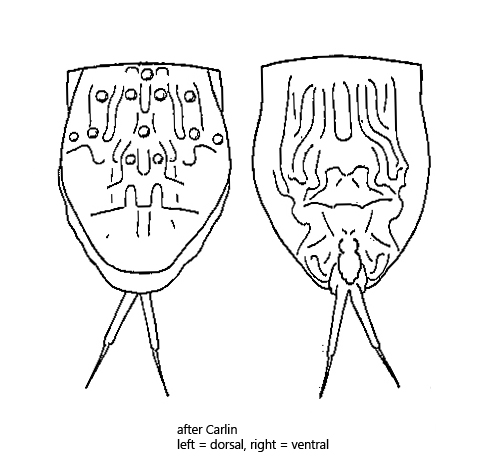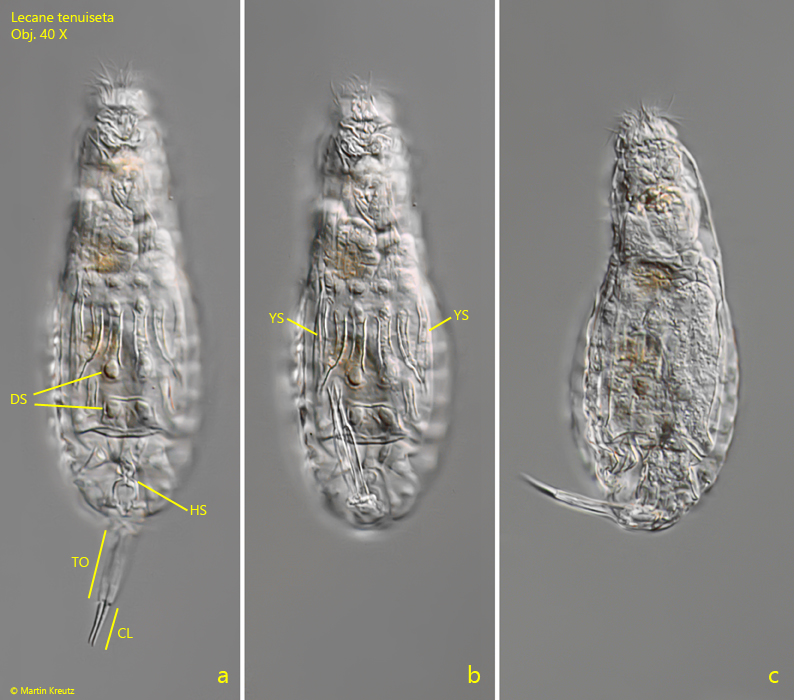Lecane tenuiseta (Harring, 1914)
Most likely ID: n.a.
Synonym: Lecane punctata
Sampling location: Simmelried
Phylogenetic tree: Lecane tenuiseta
Diagnosis:
- lorica elongate-ovate
- anterior ventral margin of lorica with a V-shaped incision
- the cuticle of the lorica is flexible and strongly sculptured with ridges and dome-shaped structures
- length about 110 µm (of retracted specimens)
- toes very long (16–20 µm), claws about half the length of toes (8–16 µm)

I found the specimen of Lecane tenuiseta shown below in October 2004 in the Simmelried. I was able to photograph it in the extended state. In most cases, however, the specimens retracts into the lorica under the coverslip. Therefore the drawings of Lecane species almost always show contracted animals. Also the data for the dimensions refer to contracted animals.
For the identification of Lecane tenuiseta I rely mainly on the very short description of this species as well as on the drawings of Carlin (s. above), who has accurately reproduced the sculpturing of the dorsal and ventral lorica. Very characteristic are two Y-shaped structures in the anterior third of the ventral lorica, which are also well visible in the living specimen (s. fig. 1 b). These two Y-shaped structures are separated by an approximately parallel-sided structure (s. fig. 1 b). The lorica of Lecane tenuiseta also has dome-shaped structures, which can also be easily seen (s. fig. 1 a). At the posterior end, there is a hourglass-shaped structure on the ventral side (s. fig. 1 a and the right drawing above). The toes of Lecane tenuiseta are quite long and the tapered claws are supposed to be half of that length. In my specimen the ratio was 22 µm : 14 µm (s. fig. 1 a), which corresponds to 2 : 1.2.
More images and information on Lecane tenuiseta: Michael Plewka-Freshwater life-Lecane tenuiseta

Fig. 1 a-c: Lecane tenuiseta. L = 142 µm (of lorica). Three focal planes of a slightly squashed specimen from ventral. Note the Y-shaped structures (YS) and the dome shaped structured (DS) of the sculptured lorica. At the posterior end a hourglass-shaped structure (HS) is visible. The toes (TO) of this specimen are 22 µm long and the claws (CL) are 14 µm long. Obj. 40 X.